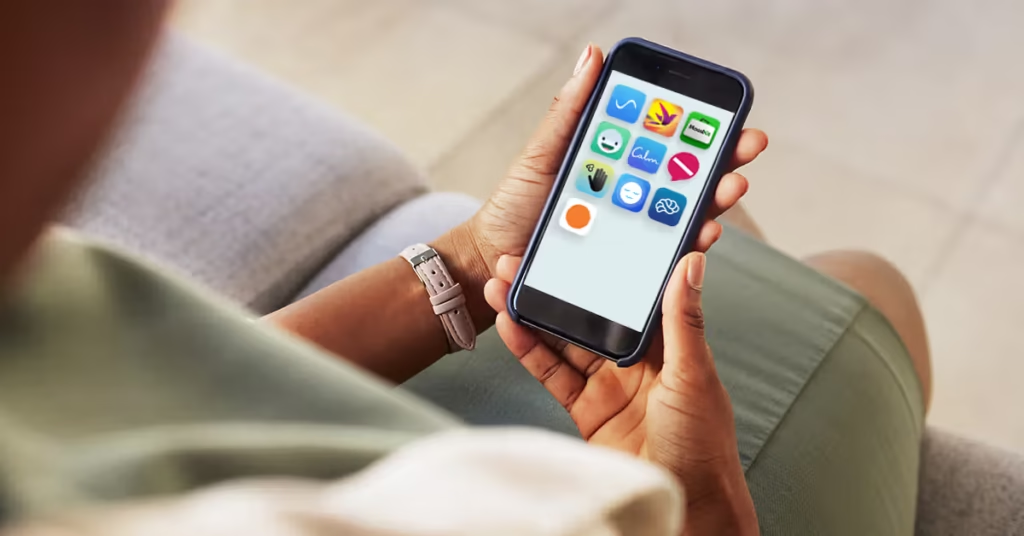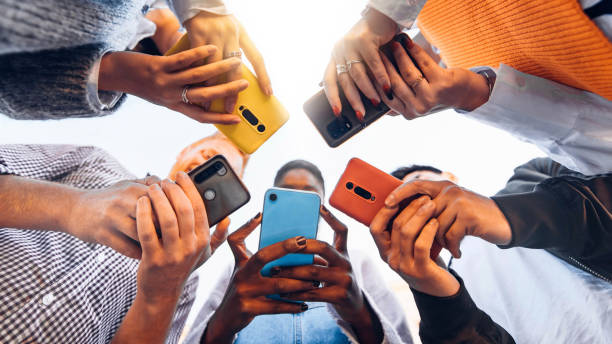
Imagine being 16, juggling school, friends, and the constant buzz of social media, all while feeling a weight you can’t quite name. For many teenagers today, this is reality. Mental health challenges like anxiety, depression, and stress are on the rise, with nearly 40% of U.S. teens reporting persistent sadness or hopelessness. Yet, in the same pocket where they carry their phone, there’s a potential lifeline: mental health apps designed specifically for young people. In 2025, these apps are more sophisticated, accessible, and teen-friendly than ever, but are they truly effective? Let’s dive into the world of mental health apps for teenagers, exploring their promise, pitfalls, and potential to transform lives.
The Teen Mental Health Crisis: Why Apps Matter
Growing up has never been easy, but today’s teens face unique pressures. Social media, academic expectations, and global uncertainties amplify stress in ways previous generations didn’t experience. A 2025 Pew Research Center report found that 48% of teens believe social media negatively impacts their peers’ mental health, up from 32% in 2022. Girls, in particular, report higher rates of anxiety and pressure from online platforms. Meanwhile, access to traditional therapy remains limited—whether due to cost, stigma, or long waitlists.
This is where mental health apps step in. They’re discreet, affordable (often free), and available 24/7, making them an appealing option for tech-savvy teens. Apps like Calm Harm and Sanvello offer tools to manage anxiety or self-harm urges, while others like Kooth provide safe online communities. But with over 10,000 mental health apps on the market, not all are created equal. Some lack evidence, others raise privacy concerns, and engagement can wane quickly. So, how do teens—and their parents—navigate this digital landscape?
My First Encounter with a Mental Health App
When I was 17, a friend recommended an app called Headspace after I confessed to feeling overwhelmed by college applications. I was skeptical—how could a phone app help me feel less like I was drowning? But one night, unable to sleep, I tried a guided meditation. The narrator’s calm voice walked me through breathing exercises, and for the first time in weeks, my racing thoughts slowed. It wasn’t a cure, but it was a start. That experience made me curious about how these apps work for today’s teens, who are even more plugged into their devices.
What Makes a Great Mental Health App for Teens?
Not every app will resonate with a teenager. The best ones are designed with young users in mind, blending evidence-based techniques with engaging, relatable content. Here’s what sets the top apps apart in 2025:
Evidence-Based Tools
Apps like MindShift, developed by Anxiety Canada, use Cognitive Behavioral Therapy (CBT) techniques, which are proven to reduce anxiety symptoms. A 2024 meta-analysis in World Psychiatry found that CBT-based apps can modestly improve depression and anxiety when used consistently. Teens can journal their thoughts, build “fear ladders” to face anxieties, or practice mindfulness—all grounded in science.
Teen-Friendly Design
Teens won’t stick with an app that feels boring or preachy. Apps like Happify use gamified activities to teach mindfulness, while eQuoo turns mental health lessons into a quest where users collect “gems” representing psychological skills. These playful elements make learning feel less like a chore.
Safe, Anonymous Communities
Many teens crave connection without judgment. Kooth, a UK-based platform, offers moderated forums where users can share struggles anonymously. A 2022 study in JMIR Formative Research noted that teens value apps that foster a sense of belonging, especially when they’re hesitant to open up in person.
Privacy and Safety
With apps collecting sensitive data, privacy is a major concern. Apps like PTSD Coach, developed by the U.S. Department of Veterans Affairs, adhere to strict HIPAA standards, ensuring user information stays secure. However, a 2023 study in the Journal of the American Academy of Child and Adolescent Psychiatry warned that many popular apps lack clear privacy policies, so checking an app’s credentials is crucial.
Top Mental Health Apps for Teens in 2025
Let’s explore some standout apps that are making waves this year. Each offers unique features tailored to teens’ needs, from managing stress to building resilience.
Sanvello: A CBT Powerhouse
Sanvello (formerly Pacifica) is a favorite for teens dealing with stress or anxiety. It offers mood tracking, guided meditations, and CBT exercises to challenge negative thoughts. Its colorful interface and daily check-ins feel like a digital journal, helping teens understand their emotions over time. While the premium version unlocks more features, the free version is robust enough for most users.
Calm Harm: A Lifeline for Self-Harm Urges
For teens struggling with self-harm, Calm Harm provides immediate support. The app suggests activities like drawing or deep breathing to “ride the wave” of urges. Developed with input from mental health experts, it’s a compassionate tool that empowers teens to take control in tough moments.
Kooth: Community and Connection
Kooth’s strength lies in its anonymous online community. Teens can join moderated discussions, chat with counselors, or write in a daily journal. It’s particularly popular in the UK, where it’s integrated into some school systems, but its model is inspiring similar platforms globally.
The Trill Project: A Safe Social Network
Created by teen girls, The Trill Project is a moderated social network where users discuss mental health, identity, and more. Its focus on marginalized groups, like LGBTQ+ teens, makes it a haven for those who feel misunderstood. The app’s peer-driven approach fosters authentic connections.
Positive Penguins: For Younger Teens
Aimed at preadolescents and younger teens, Positive Penguins uses four penguin characters to teach emotional regulation. It’s simple but effective, helping kids identify and manage feelings of anxiety or sadness through storytelling.
The Pros and Cons of Mental Health Apps
Mental health apps aren’t a one-size-fits-all solution. They offer significant benefits but come with limitations that teens and parents should understand.
The Upside
Apps are accessible, often free, and reduce the stigma of seeking help. A 2025 study in Nature Human Behaviour found that teens with mental health conditions spend more time on apps that offer coping strategies, suggesting they’re actively seeking support. Apps also empower teens to self-manage symptoms, which can build confidence and resilience.
For example, a teen using MindShift might learn to reframe anxious thoughts before a big exam, reducing panic in real time. Apps also bridge gaps in care, especially in low-income or rural areas where therapists are scarce. In low- and middle-income countries, apps like THRIVE have shown promise in reducing stress, per a 2023 study in the Journal of Technology in Behavioral Science.
The Challenges
Despite their potential, apps have drawbacks. Engagement is a big issue—90% of users abandon mental health apps within 30 days, according to a 2023 study. Teens might download an app during a crisis but lose interest once the urgency fades. Many apps also lack rigorous research; only 3–4% are evidence-based, per a 2020 JMIR mHealth review.
Privacy risks are another hurdle. Some apps share data with third parties, which can feel like a betrayal for teens sharing personal struggles. Finally, apps aren’t a substitute for professional help. A teen with severe depression or suicidal thoughts needs more than an app—they need a therapist or crisis line like 988.
How Teens and Parents Can Choose the Right App
With so many options, picking the right app can feel overwhelming. Here’s a practical guide to make the process easier.
For Teens: Find What Feels Right
Start by identifying your needs. Are you looking to manage anxiety, improve sleep, or connect with others? Try apps with free versions to test their vibe. Check user reviews on app stores, but also look for apps endorsed by trusted organizations like the American Academy of Pediatrics or Anxiety Canada. If an app feels too clinical or dull, move on—there’s one out there that’ll click.
For Parents: Do Your Homework
Parents can support teens by researching apps together. Look for apps with clear privacy policies and evidence-based tools. Websites like PsyberGuide offer unbiased reviews of mental health apps, rating them on efficacy and safety. Encourage open conversations about app use, but avoid being overly controlling—teens value autonomy.
Red Flags to Watch For
Avoid apps that promise quick fixes or lack transparency about their methods. If an app asks for excessive personal data or pushes in-app purchases aggressively, it’s a warning sign. Stick to apps with credible backing, like those developed by universities or government agencies.
The Future of Mental Health Apps for Teens
In 2025, mental health apps are evolving rapidly. Artificial Intelligence (AI) is playing a bigger role, with apps using machine learning to personalize content. For example, some apps analyze mood patterns to suggest tailored exercises, as explored in a 2022 study in Child and Adolescent Psychiatry and Mental Health. Virtual reality (VR) features are also emerging, offering immersive mindfulness experiences.
But the future isn’t just about tech. Experts emphasize the need for more research and regulation. Only 5% of mental health apps have been studied in randomized controlled trials, per a 2020 JMIR review. As demand grows, developers must prioritize evidence and user safety to ensure these tools truly help teens.
A Parent’s Perspective: Sarah’s Story
Sarah, a mom of a 15-year-old named Mia, noticed her daughter withdrawing after starting high school. Mia was hesitant to see a therapist, so Sarah suggested trying an app called Sanvello. At first, Mia rolled her eyes, but after a week of using the mood tracker, she started opening up about her stress. The app gave Mia language to describe her feelings, which made family conversations easier. For Sarah, the app was a bridge to deeper support, eventually leading Mia to therapy.
Stories like Mia’s show how apps can be a stepping stone, not a standalone fix. They’re most effective when paired with open communication and, if needed, professional care.
Conclusion: A Tool, Not a Cure
Mental health apps for teens in 2025 are a powerful resource in a world where young people face unprecedented challenges. They offer tools to manage anxiety, build resilience, and find community—all from the palm of your hand. Apps like Sanvello, Kooth, and Calm Harm are leading the way, blending science with teen-friendly design. But they’re not magic bullets. Privacy concerns, limited research, and the need for sustained engagement mean they work best as part of a broader support system.
For teens, the first step is simple: download an app that feels right and give it a try. For parents, it’s about guiding without pushing, researching options, and fostering honest conversations. Together, we can make mental health a priority, using technology as a tool to empower, not replace, human connection. If you’re a teen or parent, start small—try an app like MindShift or Kooth today, and see where it takes you. Your mental health is worth it.
FAQ
Are mental health apps safe for teenagers to use?
Safety depends on the app. Apps like PTSD Coach or MindShift, developed by reputable organizations, follow strict privacy standards like HIPAA. However, many apps lack clear privacy policies and may share data with third parties. A 2023 study found that some popular apps collect sensitive information without user consent. To ensure safety, check the app’s privacy policy, look for endorsements from trusted sources, and avoid apps that request excessive personal data. Parents should review apps with their teens to ensure they’re secure and appropriate.
Can mental health apps replace therapy for teens?
No, mental health apps are not a substitute for professional therapy, especially for severe conditions like depression or suicidal ideation. They’re best used as a supplement or starting point. Apps offer tools like CBT exercises or mood tracking, which can help teens manage mild symptoms or cope between therapy sessions. A 2024 meta-analysis showed modest benefits for anxiety and depression but emphasized that apps work best alongside professional care. If a teen is in crisis, contact a therapist or call 988 immediately.
How do I know if a mental health app is evidence-based?
An evidence-based app uses techniques backed by research, like CBT or mindfulness. Check if the app cites studies or is developed by credible organizations, such as universities or health agencies. Websites like PsyberGuide provide ratings on app efficacy. Only 3–4% of mental health apps are rigorously studied, per a 2020 JMIR review, so look for apps tested in randomized controlled trials (RCTs). User reviews can help, but they don’t replace scientific validation.
Why do teens stop using mental health apps?
Engagement is a common challenge—90% of users abandon mental health apps within 30 days, according to a 2023 study. Teens may lose interest if the app feels repetitive, too clinical, or doesn’t resonate with their needs. Gamified apps like eQuoo or Happify aim to keep users hooked, but motivation still varies. To stay engaged, teens should choose apps that align with their goals, set reminders to use them, and discuss progress with a parent or therapist.
What should parents do if their teen is using a mental health app?
Parents should take an active but supportive role. Start by researching the app’s credibility and privacy features. Have open conversations about why the teen is using it and how it’s helping, without being intrusive. Encourage pairing app use with other support, like talking to a trusted adult or seeking therapy if needed. Resources like the American Academy of Pediatrics’ Center of Excellence on Social Media and Youth Mental Health offer tips for parents on fostering healthy digital habits.


